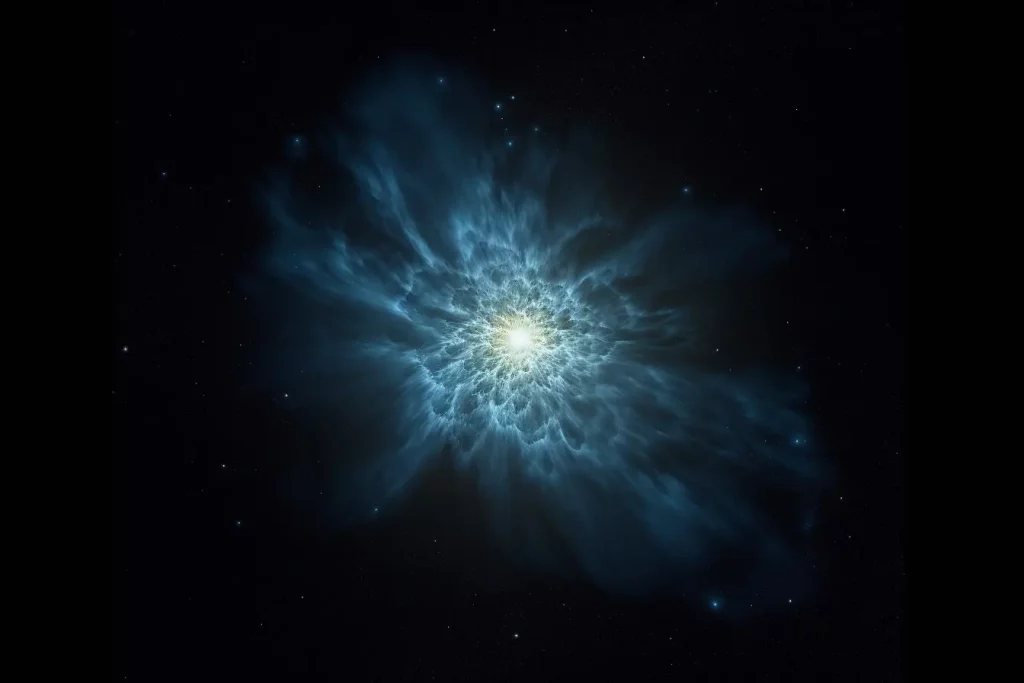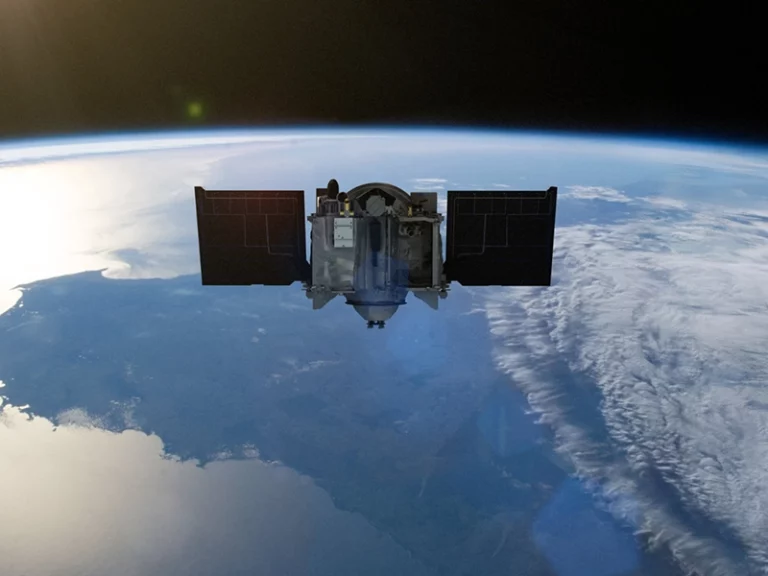Scientists have recently discovered an explosion in space that has challenged our current understanding of space explosions. The explosion was discovered 180 million light-years away and was identified as the flattest explosion ever observed in space.
The explosion observed was an extremely rare Fast Blue Optical Transient (FBOT) and was nicknamed “the cow” by astronomers.
What are Fast Blue Optical Transient Explosions?
Fast Blue Optical Transients (FBOTs) are a newly discovered class of astronomical events that appear as sudden, bright bursts of blue light in the sky.
They are much rarer than other types of explosions, such as supernovas, and are characterized by their fast evolution and high luminosity. FBOTs are still not well understood, and scientists are still trying to figure out what causes them.
Some theories suggest that they may be the result of failed supernovas or collisions between stars, while others propose that they may be caused by the merger of a white dwarf and a neutron star.
Regardless of their origin, FBOTs have already proven to be a valuable tool for astronomers studying the universe and the processes that shape it.
Space Explosions Should Be Spherical
Explosions in space are typically spherical since the stars themselves are spherical. This particular explosion had a shape similar to an extremely flat disk, unlike any other explosion observed in the past.
This event’s odd shape has left scientists scratching their heads as it contradicts our preconceptions of how stars might explode in the universe.
The scientists suspect that a dense disk may have surrounded the star itself or it may have been a failed supernova, causing this rare FBOT explosion. FBOT explosions are much less common than other explosions, such as supernovas, and only four others have ever been seen.
Scientists know very little about FBOT explosions, and this discovery will bring us closer to understanding them.
What is a Failed Supernova?
A failed supernova is a theoretical phenomenon that occurs when a star dies but does not have enough mass to create a black hole or neutron star. In a normal supernova, the core of a massive star collapses and explodes, leaving behind either a neutron star or a black hole.
However, in a failed supernova, the star’s core collapses, but the explosion is not strong enough to eject the outer layers of the star. Instead, the core collapses into a black hole or neutron star, which then begins to consume the rest of the star.
Failed supernovas are still poorly understood and are a subject of ongoing research in astrophysics.
In this other article, we explore another recent observation: The Brightest Gamma-Ray Burst Ever Observed.
It is a Rare Space Event
Lead author Dr. Justyn Maund from the University of Sheffield’s Department of Physics and Astronomy said, “Very little is known about FBOT explosions – they just don’t behave like exploding stars should, they are too bright and they evolve too quickly. Put simply, they are weird, and this new observation makes them even weirder.”
The scientists discovered this event by spotting a flash of polarized light entirely by chance. They measured the polarization of the blast, which allowed them to measure the shape of the explosion.
They could map the edges of the blast and see how flat it was, effectively seeing something the size of our solar system but in a galaxy 180 million light-years away.
The study has been published in the Monthly Notices of the Royal Astronomical Society. Researchers will now undertake a new survey with the international Vera Rubin Observatory in Chile, which is expected to help discover more FBOTs and further understand them.
Conclusion
In conclusion, the discovery of the flattest explosion ever observed in space has challenged our current understanding of space explosions. Scientists suspect that a dense disk may have surrounded the star itself or it may have been a failed supernova.
While FBOT explosions are rare and not well understood, this observation brings us closer to understanding them.
With further research, we hope to uncover the mysteries of FBOT explosions and continue to expand our knowledge of the universe.
Reference
Scientists observe the flattest explosion ever seen in space. Link to the resource





